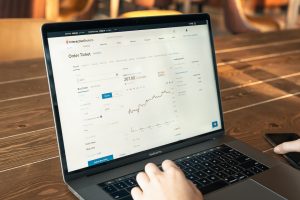Trading with leverage is a popular way to increase your exposure to the markets without having to commit a large amount of capital upfront. Forex trading is particularly popular among traders who utilize leverage, and many brokers offer leverage ratios of up to 1000:1. However, trading with leverage can be risky, and it requires a sound understanding of risk management principles to minimize potential losses. In this article, we will discuss how to trade a 1000:1 leveraged forex account.
What is leverage?
Leverage is essentially borrowing capital to increase the size of your position. In forex trading, leverage allows you to control a larger position than your account balance would normally allow. For example, if you have $1,000 in your trading account and your broker offers a 1000:1 leverage ratio, you can control a position size of $1,000,000.
While leverage can amplify your profits, it can also amplify your losses. For example, if the market moves against your position, your losses can quickly exceed your initial investment. Therefore, it is essential to use leverage with caution and to implement strict risk management principles.
Risk management
One of the most important aspects of trading with leverage is risk management. You should always use stop-loss orders to limit your potential losses. A stop-loss order is an automatic order that closes your position at a specified price level. This ensures that you do not lose more than you are willing to risk.
Another important risk management principle is to never risk more than 2% of your account balance on any single trade. This means that if you have $1,000 in your account, you should not risk more than $20 on any single trade.
Trading strategy
When trading with leverage, it is important to have a solid trading strategy. This means having a clear understanding of market trends, technical analysis, and fundamental analysis.
Technical analysis involves using charts and technical indicators to identify trading opportunities. This can include identifying support and resistance levels, trend lines, and chart patterns.
Fundamental analysis involves analyzing economic data and news events to identify potential trading opportunities. This can include analyzing interest rates, inflation, and political events.
It is important to have a trading plan that incorporates both technical and fundamental analysis to identify potential trading opportunities.
Position sizing
Position sizing is another important aspect of trading with leverage. It is important to determine the appropriate position size based on your account balance and risk tolerance.
As mentioned earlier, it is recommended to never risk more than 2% of your account balance on any single trade. This means that if you have $1,000 in your account, you should not risk more than $20 on any single trade.
In addition, it is important to consider the margin requirements of your broker. Margin requirements refer to the amount of capital required to hold a position. For example, if your broker requires a 1% margin, you will need to have $10,000 in your account to hold a position size of $1,000,000.
Conclusion
Trading with leverage can be a powerful tool for increasing your exposure to the markets. However, it is important to use leverage with caution and to implement strict risk management principles. This includes using stop-loss orders, never risking more than 2% of your account balance on any single trade, and having a solid trading strategy that incorporates both technical and fundamental analysis. By following these principles, you can trade a 1000:1 leveraged forex account with confidence and minimize potential losses.






